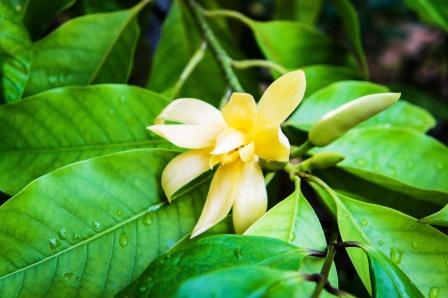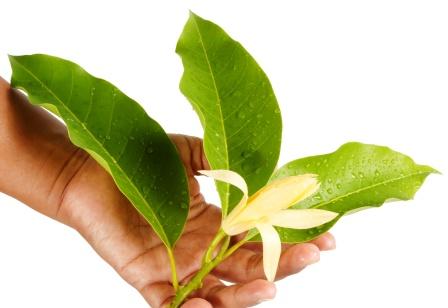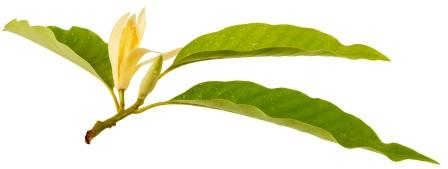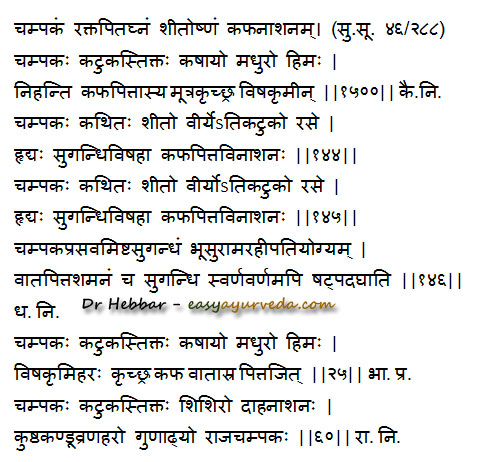Michelia champaca Uses, Research, Side Effects
Michelia champaca or Champak is a famous fragrant flowering plant. Its flowers and stem bark are useful in diabetes, quick wound healing, cardiac disorders, gout, dysuria and more.
Botanical name- Michelia champaca Linn
Family- Magnoliaceae (champaka kula)
Table of Contents
Vernacular names
Names in different languages:
English name- Golden champa, Champak
Hindi name- Champa
Kannada name – Sampige
Telugu name- Sampangi
Tamil name- Sembugam, Shenbagam
Malayalam name – Chenbagam
Bengali name – Sorno champa

Sanskrit Synonyms
Champeya, Champaka, Hemapushpa, Kanchana, Shat Pada, Latika, Phali, Gandhaphali, Gandhaphala, Deepapushpa, Sthirapushpa, Peetapushpa, Hemahva
Classical categorisation
Kaiyadeva Nighantu – Oshadhi Vargha, Sarvaushadhika Varga, Sugandhamalaka Varga
Sodala Nighantu, Dhanvantari Nighantu – Amradi Varga
Bhavaprakasha – Pushpavarga
Raja Nighantu – Karaveeradi Varga

Major chemical constituents
Stem bark – Iiriodenine, Macheline, Lanuginosine
Leaves – Polyisoprenoid, B- sitosterol, Liridenine
Roots- Champakin, Liriodenine, Micheliolide
Essential oil- (from flowers) Champacene, Linalool
(Reference: Illustrated Dravyaguna VIjnana, Vol. II, by Dr JLN Shastry)

Varieties
Acc. to Raja Nighantu – 2 types
Champaka
Ksudra champaka
Acc. to Saligrama Nighantu – 5 types
Sweta Champaka
Naga champaka
Sultana champaka
Nila Champaka
Bhumi champaka
Part used, dosage
Part used:
flower (Pushpa), steam bark and root bark
Dosage:
Powder 3-6 g ; bark decoction 50-100 ml.
Medicinal qualities
Champaka – medicinal qualities:
Guna (qualities) – Laghu (lightness), Rooksha (Dryness)
Rasa (taste) – Tikta (Bitter), Katu (pungent), Kashaya (Astringent)
Vipaka – Katu – Undergoes pungent taste conversion after digestion.
Veerya – Sheeta – It is a coolant
Effect on Tridosha: It balances all the Three Doshas, especially Kapha.
Pharmacological action – Purgative, Emmenagogue, Stimulant, Carminative
Sanskrit verse

Michelia champaca is indicated in
Raktapitta –Bleeding disorders such as nasal bleeding, heavy periods, etc
Mutrakrichra –Dysuria, urinary retention
Visha – Toxic conditions, poisoning
Krumi – worm infestation
Hrudya – acts as cardiac tonic, congenial for heart
Vatasra – Gout
Daha – Burning sensation
Vrana – Ulcers, wounds
Flower buds are used in treating diabetes
It is also used as purgative, treatment of inflammation, amenorrhoea, cough, dyspepsia.
Research
Antidiabetic activity of Flower buds – The ethanolic extract of Michelia champaca exhibited significant antihyperglycemic activity but did not produce hypoglycemia in fasted normal rats.
Phytochemical studies of stem bark – reveals presence of triterpenoids, steroids, fatty acid and absence of alkaloids, carbohydrates, Glycosides, Resins, Saponins and tannins.
Characterization of Antimicrobial, Antioxidant, Anticancer of seed and flower extracts.
Side effects
There are no known side effects with this herb.
Can be used in children and during lactation.
Seek medical advice during pregnancy.
Interaction with medicines, supplements
Can this be used while taking Homeopathic medicine?
Yes. This product does not react with homeopathic medicine.
Can this medicine be continued while taking supplements like multivitamin tablets, Omega 3 fatty acids etc?
Yes. Generally, this product goes well with most dietary supplements. However, if you are taking more than one product per day, please consult your doctor for an opinion.
With western
medicines
Seek your
doctor’s advice if you are taking this product along with other western
(allopathic / modern) medicines. Some Ayurvedic herbs can interact with modern
medicine.
If both Ayurvedic and allopathic medicines are advised together, then it is
best to take Allopathic medicine first, wait for 30 minutes and then take the
Ayurvedic medicine.
Ayurvedic medicines
Ayurvedic medicines with Champaka as ingredient:
Baladhatryadi Thailam – Oil, used in headache, eye disorders, burning sensation in eyes, head, gout arthritis.
Madana Kameswari Lehyam – Used as aphrodisiac tonic
Maharajaprasarini Thailam – Used in neurological problems
Morphology
Medium sized tree with gray or brown black bark
Leaf – Simple, alternate, oblong lanceolate, glabrous above
Flower – Yellow to Orange, fragrant
Fruit – Capsule
Seeds – Brown rounded on the back with pink fleshy aril
Part used – Bark, Flower
Sthanika Karma (Systemic Action)
External use
Cures burning sensation, Cleanses the wound and promotes fast healing. Bark and flower paste are indicated in itchy skin conditions, burning sensation, headache etc.
Internal administration-
Digestive System – Root has purgative effect. Indicated in Anorexia, loss of appetite, Abdominal cramp, Abdominal distension, Helminthiasis, Amadosha etc.
Respiratory system – Pacifies kapha dosha. indicated in cough, breathing problems etc.
Excretory System – Increases urine output. Flower is indicated in dysuria and in UTI
Circulatory system – Good for heart, Acts as a blood purifier, Indicated in bleeding disorders, edema etc.
Reproductive system – Root bark is uterine stimulant and is indicated in Amenorrhea, Dysmenorrhea etc.
Tvak – Indicated in skin diseases
Tapakrama – Hot infusion of the bark can be given in jirna jvara and in vishamajvara. Flowers are beneficial to cure burning sensation.
Satmikarana – Indicated in general debility. It possesses Anti poisonous property.











4 comments
habiba taj
useful article,thanku sir
Asha
Very much informetiv with pictures u have explained and also the products in which it Iis used.
Pandit Shaktidhar Sankholia
Is it a lata(bel) or Plant.Please show Complete LATA(bel)or Plant
Dr J V Hebbar MD(Ayu)Author
It is a plant that grows straight.